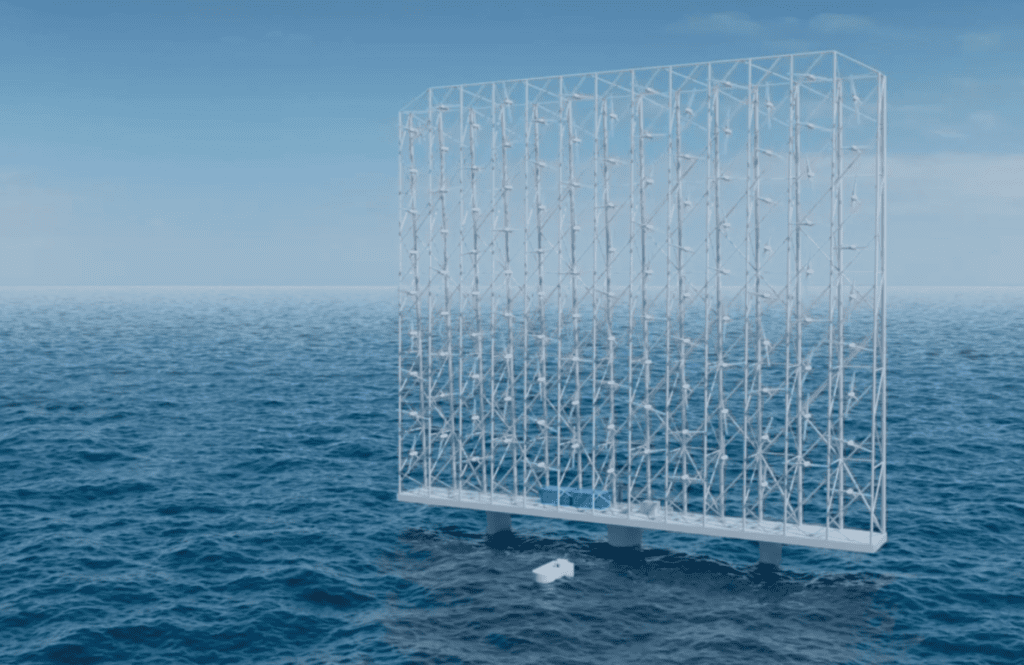We’ve seen some remarkable innovations in wind energy in recent years — so much so that within a decade or so, wind energy went from a fringe alternative to cost-competitive with cheap, polluting fossil fuels. But most of these innovations took place “behind the scenes”, in the materials and mechanisms powering wind turbines. Seen from afar, a wind turbine developed yesterday looks pretty similar to one made ten years ago.
But that may soon change. A company in Norway wants to redesign offshore wind farms. According to the company, its 1,000-feet (304-meter) tall structure can generate five times more energy than the largest existing wind turbines, and at a lower cost to boot.

Just one of these arrays could offer double the swept area of the world’s biggest conventional wind turbines and, with its smaller rotors, use that wind energy more efficiently, says Wind Catching Systems (WCS), the company behind the project.
The system also works in stronger wind speeds (over 40 km/h or 25 miles), when larger turbines tend to limit production or stop entirely to protect themselves from damage.
Overall, the net result is that the system produces a 500% boost in annual energy output, and the price is already comparable to other offshore wind farms in Norway. It’s still more expensive than land-based wind or solar energy, but this is in large part owed to the high installation cost, says WCS. As operations are scaled, the costs could be brought down substantially.
Floating offshore wind farms have become a popular topic in renewable energy technology, because they could also be used in shallow waters, which extends the total surface area available for offshore wind farms. For countries like Norway or Japan, with a lot of shallow waters, this is a big deal.
“Wind Catching will make floating offshore wind competitive as soon as in 2022-2023, which is at least ten years earlier than conventional floating offshore wind farms,” claims Ole Heggheim, CEO of Wind Catching Systems.
A conventional floating farm already exists in Scotland, but this design is more efficient, says WCS.
Easier to build, deploy, and recycle
Another problem with windmills is that the bigger ones tend to be more efficient, but the bigger ones are also harder to transport and recycle. The wind catching system has no large components and can be monitored without the need for any special cranes or vessels. The costs could be brought down significantly. The system also has an alleged lifespan of 50 years, longer than conventional wind turbines.
However, WCS has not yet released further details about a prototype or a potential first installation. All we have so far are render images and press releases, so we’ll have to wait and see whether this is actually as good as they say or whether there’s also some hot air to their announcements. At any rate, there’s still plenty of room for innovation in wind energy.









